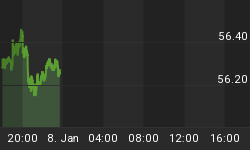Stock markets rise and fall more than they should on any rational basis. This is usually shown by excessive optimism when times are good and exaggerated despondency during recessions. Today, however, markets do not conform to the usual pattern. Wall Street, for example, is still about 50% above its fair value, even though the US economy is performing poorly.
Over the past six months output has been nearly stagnant in the US, Europe and Japan. There is a widespread belief that demand is beginning to pick up, but even if the current bout of optimism proves to be premature, economic policy will surely be eased again until a sustained recovery is in place. It is unlikely that voters in Europe and America will be either as patient or as ineffective as voters in Japan have been over the past decade in persuading their respective governments to introduce measures of economic stimulation. The world economy, following the bursting of the US bubble, is thus unlikely to be entering a prolonged period of stagnation similar to that which has followed the end of the great bull market in Japan in 1990.
Over the next few years therefore, the world economy should improve while the US stock market falls. This is something of a paradox, because financial markets have an important impact on the real economy. The difficulty of combining a rational degree of optimism about the world economy with an equally rational caution about financial markets is currently the cause of much doubt and confusion.
This confusion has been underlined by inconsistent views of the future being shown by the world's bond and equity markets. From around November 2002 to May 2003, both bond and equity markets rose. Bond markets were anticipating continued slow growth with deflationary pressures getting stronger, while the equity markets have been taking the opposite view.
Recently, however, the mood has changed and, with bond yields rising, both markets are increasingly confident that we will shortly experience an economic recovery. This confidence is as yet without any convincing evidence to support it, and is crucially dependent on the belief that the US will be able to grow with sufficient vigour to pull up the rest of the world with it.
There is a strong risk, however, that confidence is running ahead of events. This presents two potential dangers. The first is that the subsequent disappointment will produce cutbacks in consumer spending and corporate investment. The second is that it will encourage complacency among governments and central banks and delay the introduction of additional measures to stimulate demand.
There are at the moment two important stabilisers which have the effect of limiting the likely recovery of the US economy. One is the external current account and the other is the bond market.
As neither Europe nor Japan is likely to provide the dynamic for world recovery, this depends on the US economy. The result is that if domestic demand in the US economy does pick up, growth of output will be restrained by a rise in the US external current account deficit. This is likely despite the recent weakness of the dollar. While the US external deficit shrank slightly when US GPD fell during 2000 and 2001, it has since been expanding again. This was even the case during the past six months when US GDP growth has been below 1.5% p.a. The faster the US domestic demand grows, the greater will be the negative impact on GDP coming from a rise in net imports.
The other stabiliser is the household savings rate, which is extremely low. The rate has begun to rise, but the increase has so far been slow and small, due to the fall in bond yields. US mortgage borrowers borrow at rates linked to long bond yields, but they have an option to refinance their debts at lower interest rates when bond yields fall. Households have, as a result, been able to reduce their interest payments, freeing up cash for additional spending.
For this process to keep going, bond yields have to keep falling. As they stabilise household savings are likely to rise.
The US economy will be helped by the tax cuts that were recently passed by Congress. This makes some recovery probable, but the cuts were well below the administration's original proposal and, with the stabilisers that are in place, a moderate rather than a strong expansion seems likely.
Moderate expansion, however, is unlikely to satisfy the expectations of equity investors either for an end to deflation or for a rapid rise in profits. Without rapid growth, a sizeable gap will remain between the current level of output and the full potential of the economy, which means that deflationary pressures will continue to intensify rather than wane. If profits disappoint, share prices are likely to fall, which will in turn weaken the US economy.
It is thus likely that the current bout of optimism regarding the world economy will prove to be excessive. But this should only be a temporary setback.
















